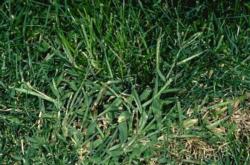Gardening Questions Answered
Crabgrass Prevention in Lawns
What is the best time to apply preemergent on my lawn to prevent crabgrass?
Crabgrass can be easily and safely controlled using a pre-emergent herbicide, but timing is everything. The key is to apply the products before the weeds germinate in the latter part of January and early February, depending on the weather that year. Look for products containing one of the following active ingredients; benefin, bensulide, DCPA, dithiopyr, orayzalin, pendimethalin, prodiamine and trifluralin. Follow directions carefully. Depending on the weather, seeds may continue to germinate throughout the spring and summer. Proper irrigation and adequate fertilization will aid in preventing crabgrass because a lawn is more competetive and can shade out weeds. Fertilize the lawn once it begins active growth in the spring. For tall fescue apply during February. For Bermuda grasses, apply a pre-emergent late March to early April.
Note: Spotted spurge seeds will also germinate in February in our warm climate. Pre-emergents that will control both crabgrass and spurge are available. They are: (1) DCPA, (2) dithipyr, (3) oryzalin, and (4) pendimethalin. Remember that pre-emergents prevent all seeds from germinating for 6 weeks and apply carefully near flower and vegetable beds.
UC Pest Note 74113: Weed Management in Lawns
